
Van Buren is the second-largest city in the Fort Smith, Arkansas–Oklahoma Metropolitan Statistical Area and the county seat of Crawford County, Arkansas, United States. The city is located directly northeast of Fort Smith at the Interstate 40 – Interstate 540 junction. The city was incorporated in 1845 and as of the 2020 census had a population of 23,218, ranking it as the state's 21st largest city.
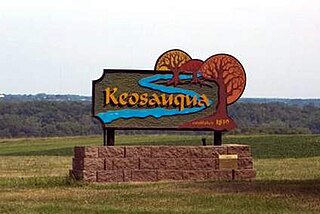
Keosauqua is a city in Van Buren County, Iowa, United States. The population was 936 at the time of the 2020 census. It is the county seat of Van Buren County.
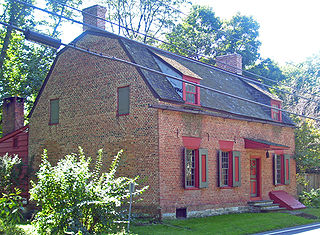
Claverack is a town in Columbia County, New York, United States. The population was 6,021 at the 2010 census. The town name is a corruption for the Dutch word “Klaverakker” for "Clover Fields" or "Clover Reach". In 1705, the first discovery of a mastodon tooth occurred here.

Arkansas Tech University (ATU) is a public university in Russellville, Arkansas. The university offers programs at both baccalaureate and graduate levels in a range of fields. The Arkansas Tech University–Ozark Campus, a two-year satellite campus in the town of Ozark, primarily focuses on associate and certificate education.
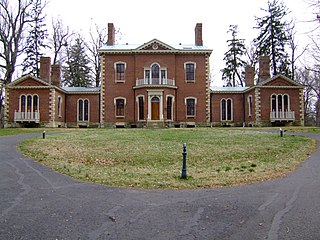
Ashland is the name of the plantation of the 19th-century Kentucky statesman Henry Clay, located in Lexington, Kentucky, in the central Bluegrass region of the state. The buildings were built by enslaved African Americans, and enslaved people grew and harvested hemp, farmed livestock, and cooked and cleaned for the Clays.
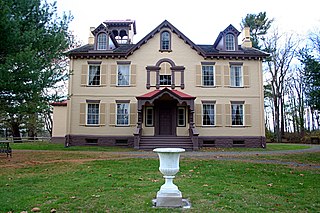
Martin Van Buren National Historic Site is a unit of the United States National Park Service in Columbia County, New York, 1 mile (1.6 km) south of the village of Kinderhook, 125 miles (201 km) north of New York City and 20 miles (32 km) south of Albany. The National Historic Site preserves the Lindenwald estate owned by Martin Van Buren, the eighth president of the United States. Van Buren purchased the 36-room mansion during his presidency in 1839, and it became his home and farm from his leaving office in 1841 until his death in 1862.

Decatur House is a historic house museum at 748 Jackson Place in Washington, D.C., the capital of the United States. It is named after its first owner and occupant naval officer Stephen Decatur. The house is located at the northwest corner of Lafayette Square, at the southwest corner of Jackson Place and H Street, near the White House. In 1836, new owners built an outbuilding on the property at the back which was in part used for slave quarters. Now a museum, the property also serves as the National Center for White House History, managed by the White House Historical Association.
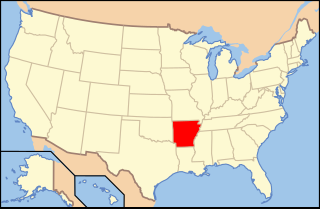
The following is an alphabetical list of articles related to the U.S. State of Arkansas.
Mills House may refer to:

U.S. Route 64 is a U.S. highway running from Teec Nos Pos, Arizona east to Nags Head, North Carolina. In the U.S. state of Arkansas, the route runs 246.35 miles (396.46 km) from the Oklahoma border in Fort Smith east to the Tennessee border in Memphis. The route passes through several cities and towns, including Fort Smith, Clarksville, Russellville, Conway, Searcy, and West Memphis. US 64 runs parallel to Interstate 40 until Conway, when I-40 takes a more southerly route.

This is a list of the National Register of Historic Places listings in Van Buren County, Arkansas.
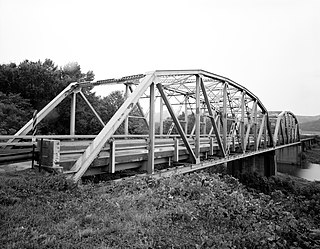
The Lee Creek Bridge in Natural Dam, Arkansas was a Pennsylvania through truss bridge that was built in 1934. It was a twin-span bridge with a total length of 587 feet (179 m), which carried Arkansas Highway 59 across Lee Creek. It rested on concrete piers and abutments, had a vertical clearance of 14 feet (4.3 m) and had a roadbed 22 feet (6.7 m) wide.
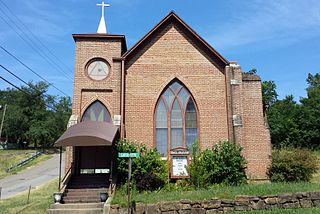
The Mount Olive United Methodist Church is a historic church at Lafayette and Knox Streets in Van Buren, Arkansas. It is a rectangular single-story brick structure with Gothic Revival styling. Its main facade has a large Gothic-arch window below the main roof gable, and a squat square tower to its left, housing the entrance in a Gothic-arched opening. The church was built in 1889 for a congregation that consisted of recently emancipated African-American former slaves when it was organized in 1869. It is a significant local landmark in its African-American culture and history.

The Van Buren Historic District encompasses eight blocks of historic buildings along Main Street in Van Buren, Arkansas. Many of the structures are pre-1920 Victorian and Italianate buildings closely related to the history of commerce in the city. Positioned between the city's train depot and the Arkansas River, the businesses constituting the Van Buren Historic District have played a vital role in the history and economy of the city and region. The district was placed on the National Register of Historic Places as a National Historic District on April 30, 1976.
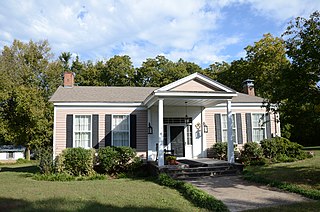
The Clarke–Harrell–Burson House is a historic house at 603 Parkview in Van Buren, Arkansas. It is a single-story wood-frame structure with Greek Revival styling, built about 1841, and is believed to have been the first non-log house built in the area known as Logtown that is now part of the city of Van Buren. The house is locally notable for several prominent residents: George Washington Clarke was the publisher of Arkansas's first newspaper west of Little Rock, the Intelligencer, which began publication in 1842 and was taken over by Clarke in 1844. The house's next owner, the Rev. Jonathan Harrell, was the first Methodist minister in the region, and a founding member of the Arkansas Methodist conference. Later in the 19th century it was owned by Dr. Edward Burson, a veteran of the American Civil War and a prominent local dentist.

The Drennen-Scott House is a historic house museum on North 3rd Street in Van Buren, Arkansas. It is a single-story log structure, finished in clapboards, with a side-gable roof that has a slight bell-cast shape due to the projection of the roof over the front porch that extends across the width of its main block. The house was built in 1836 by John Drennen, one of Van Buren's first settlers. Drennen and his brother-in-law David Thompson were responsible for platting the town, and Drennen was politically active, serving in the territorial and state legislatures, and at the state constitutional convention. The house remained in the hands of Drennen descendants until it was acquired by the University of Arkansas at Fort Smith, which operates it as a house museum.
The Joseph Starr Dunham House is a historic house at 418 Broadway in Van Buren, Arkansas. Built c. 1870, this 1+1⁄2-story wood-frame house is a fine local example of Gothic Revival architecture, with a steeply-pitched side-gable roof that has front-facing gable dormers decorated with sawn woodwork, and a full-width front porch with spiral posts and delicate brackets. Joseph Starr Dunham, the owner, was a Connecticut native who settled in Van Buren in 1859 and began publishing the Van Buren Press; the house was still in family hands when it was listed on the National Register of Historic Places in 1976.
Lycurgus Johnson (1818-1876) was an American cotton planter and large slaveholder in the Arkansas Delta during the antebellum years. Born to the powerful political and planter Johnson family in Scott County, Kentucky, he became the owner and developer of the Lakeport Plantation in Chicot County, Arkansas. It bordered the west bank of the Mississippi River.
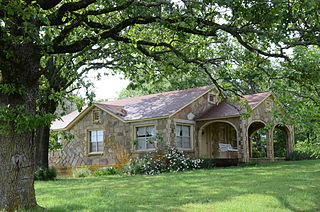
The Melvin Chrisco House is a historic house at 237 Alvin Brown Road in Damascus, Arkansas. It is a single-story wood-frame structure, with a gabled roof and an exterior of stone veneer with cream-colored brick trim. A multi-arched gabled-roofed porch shelters the front entrance. The house was built in 1947, its exterior finished by the regionally prominent African-American mason Silas Owens, Sr. It exhibits hallmarks of Owens's work, including herringbone patterning in the stone work, arched porch openings, and the use of cream brick in quoined patterns on corners and openings.

The Henry "Harry" Charles Pernot House is a historic house at 119 Fayetteville Road in Van Buren, Arkansas. Built in the early 20th century, it is an eclectic and late example of blended Queen Anne and Second Empire architecture. It has asymmetrical massing and a tower, characteristic of the Second Empire, along with a Queen Anne porch that features turned posts and a spindled valance. Harry Pernot, who built it, was mayor of Van Buren, 1904–1909.



















